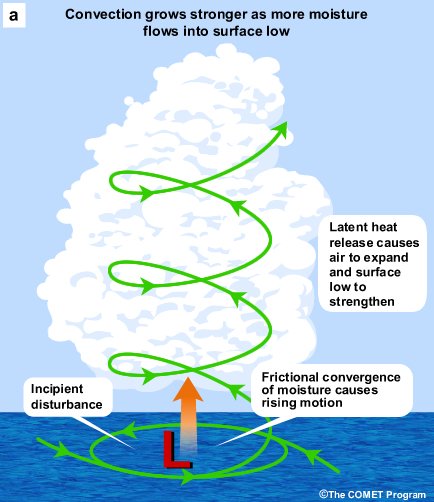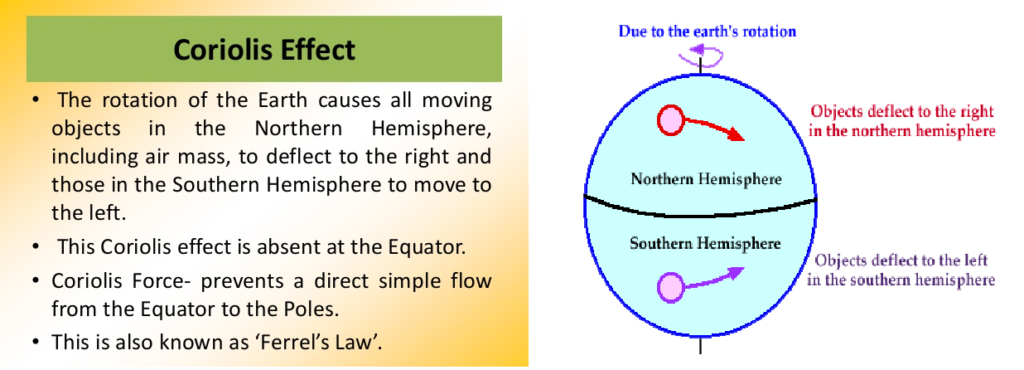What is the Impact of Coriolis force and latent heat in the development of tropical cyclones The Coriolis force is a result of the Earth’s rotation, causing moving air or water to be deflected to the right in the Northern Hemisphere and to the left in the Southern Hemisphere. This force is essential for the formation and organization of tropical cyclones. Without the Coriolis force, the cyclonic rotation wouldn’t happen.
The Impact of Coriolis Force and Latent Heat on the Development of Tropical Cyclones:
Understanding the physical phenomena that drive the formation and development of tropical cyclones, often known as hurricanes or typhoons, is crucial in predicting their occurrence and mitigating their devastating effects. Among these phenomena, the Coriolis Force and the release of latent heat play significant roles in tropical cyclone development. Here, we aim to elucidate their influence.
What is the impact of Coriolis force and latent heat on the development of tropical Cyclones
The impact of the Coriolis force and latent heat on the development of tropical cyclones is linked to the rotation and intensification of these storms. The Coriolis force, caused by Earth’s rotation, gives cyclones their characteristic spin in the Northern or Southern Hemisphere. Meanwhile, latent heat, which is released when water vapor condenses into droplets in the storm’s updraft, fuels the storm by warming the surrounding air, causing it to rise faster and intensifying the cyclone. Together, the Coriolis effect and latent heat release are crucial for the formation and strengthening of tropical cyclones.
What is the Coriolis Force?
The Coriolis Force is a fictitious or apparent force that acts on a mass moving in a rotating system. It is an essential ingredient in cyclone formation. On Earth, this force is a result of our planet’s rotation.
In the context of tropical cyclones, the Coriolis force causes the air that’s rushing towards the low-pressure center of the cyclone to be deflected. Instead of moving straight inwards, the air spirals, contributing to the distinctive circular pattern of cyclones. Without the Coriolis force, the inrushing air would move directly towards the center, and the cyclone would not form.

However, the Coriolis effect varies with latitude. It’s zero at the equator and increases towards the poles. This is why tropical cyclones do not typically form within 5 degrees latitude of the equator. There isn’t enough Coriolis effect to initiate the cyclonic circulation.
The Role of Latent Heat in Cyclone Formation
In the tropical oceans, intense solar heating causes evaporation, transforming the surface water into water vapor. As moist air is lighter than dry air, this moisture-laden air tends to rise, a process facilitated by local convective instability or larger-scale weather disturbances.

As the water vapor in the rising moist air reaches higher, cooler altitudes, it condenses into liquid droplets, forming clouds. This condensation process releases latent heat – the energy that was initially used to convert the water from a liquid state to a gaseous state.
The release of this latent heat warms the surrounding air, making it lighter. The lighter, warmed air then continues to rise, and this creates a region of low pressure beneath, thus drawing in more surrounding air and moisture. The process repeats, and the storm system begins to grow, fueled by a continuous supply of moisture and latent heat.
As the system strengthens and matures, it can form a tropical cyclone if other necessary conditions are met, such as appropriate sea surface temperatures and wind conditions. The latent heat release is a self-sustaining process that continues to intensify the cyclone until it reaches land, where the moisture supply is cut off, or moves over cooler waters where the heat energy is insufficient for cyclone maintenance.
The Symbiosis of Coriolis Force and Latent Heat Release
In essence, the Coriolis force and the release of latent heat work synergistically in the development of a tropical cyclone. The Coriolis force creates the rotational framework necessary for the cyclone, while the latent heat provides the energy that drives and intensifies the cyclonic system.
Through understanding the interplay between the Coriolis force and latent heat, scientists and meteorologists can improve the prediction and tracking of these powerful storms, potentially saving lives and reducing damage to property and infrastructure.
Overall, these physical phenomena remind us of the intricate balances and immense forces at play in our Earth’s climate system. Understanding these processes not only aids in predicting and mitigating natural disasters but also contributes to our broader comprehension of the Earth’s climate and weather patterns.